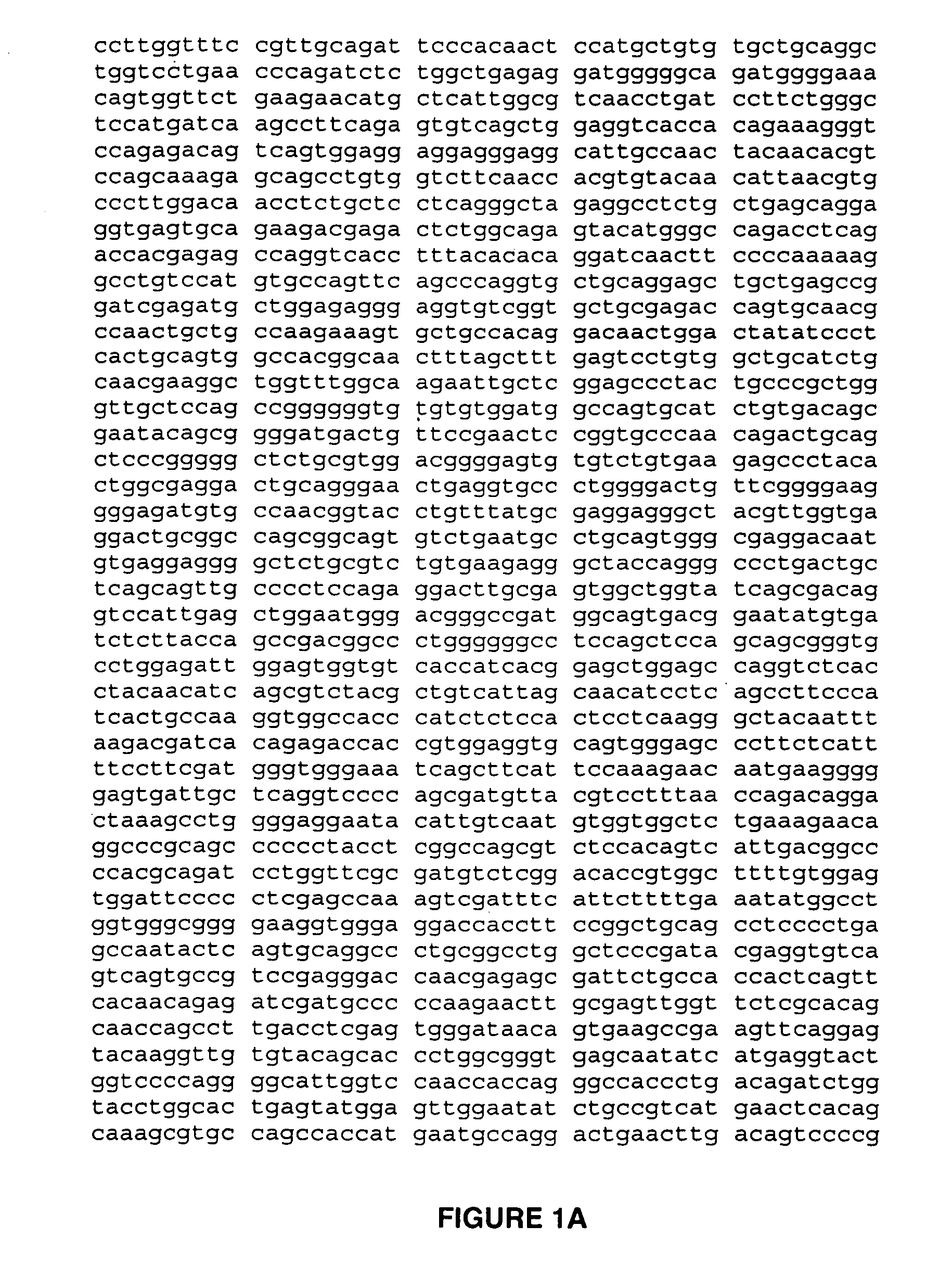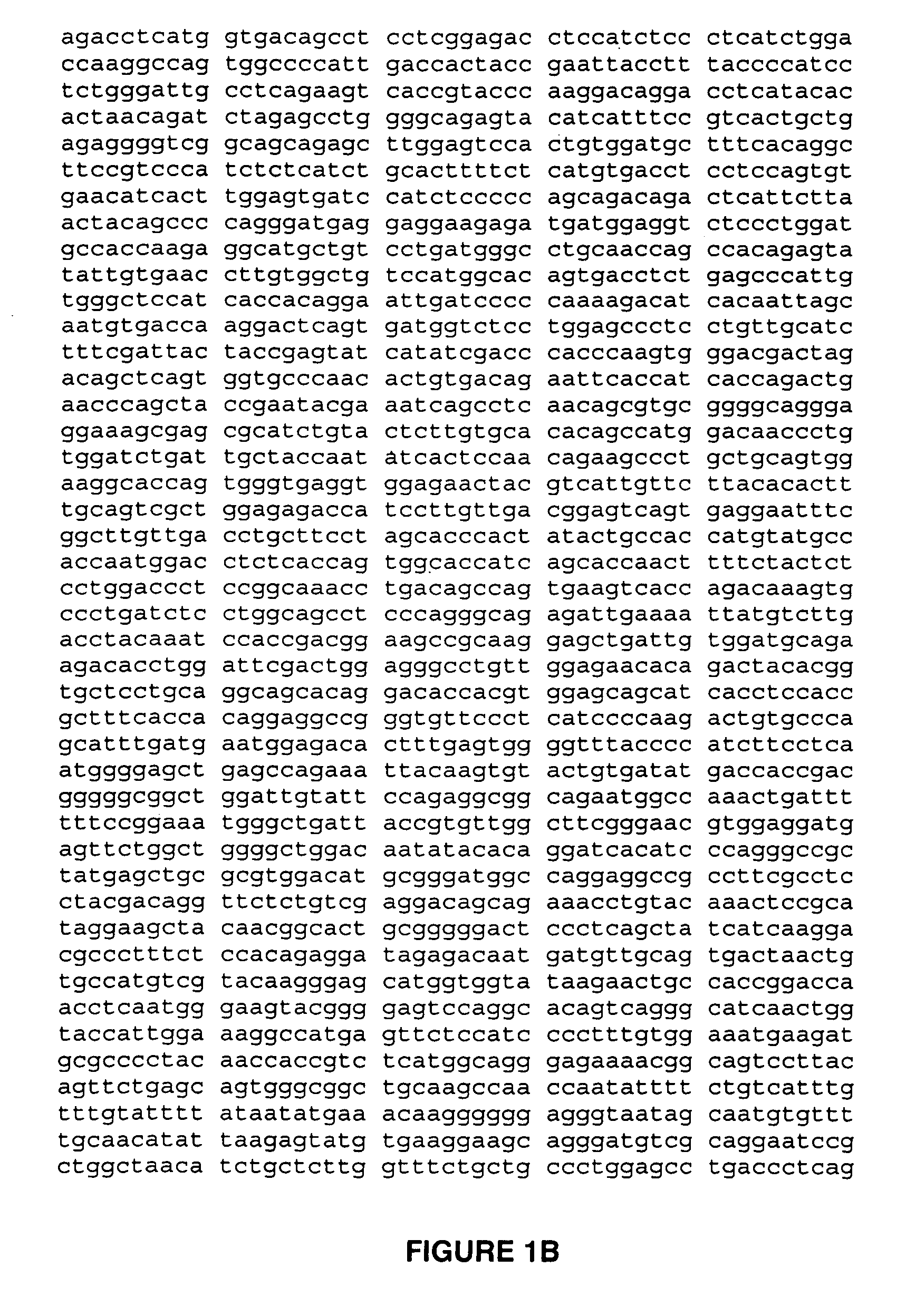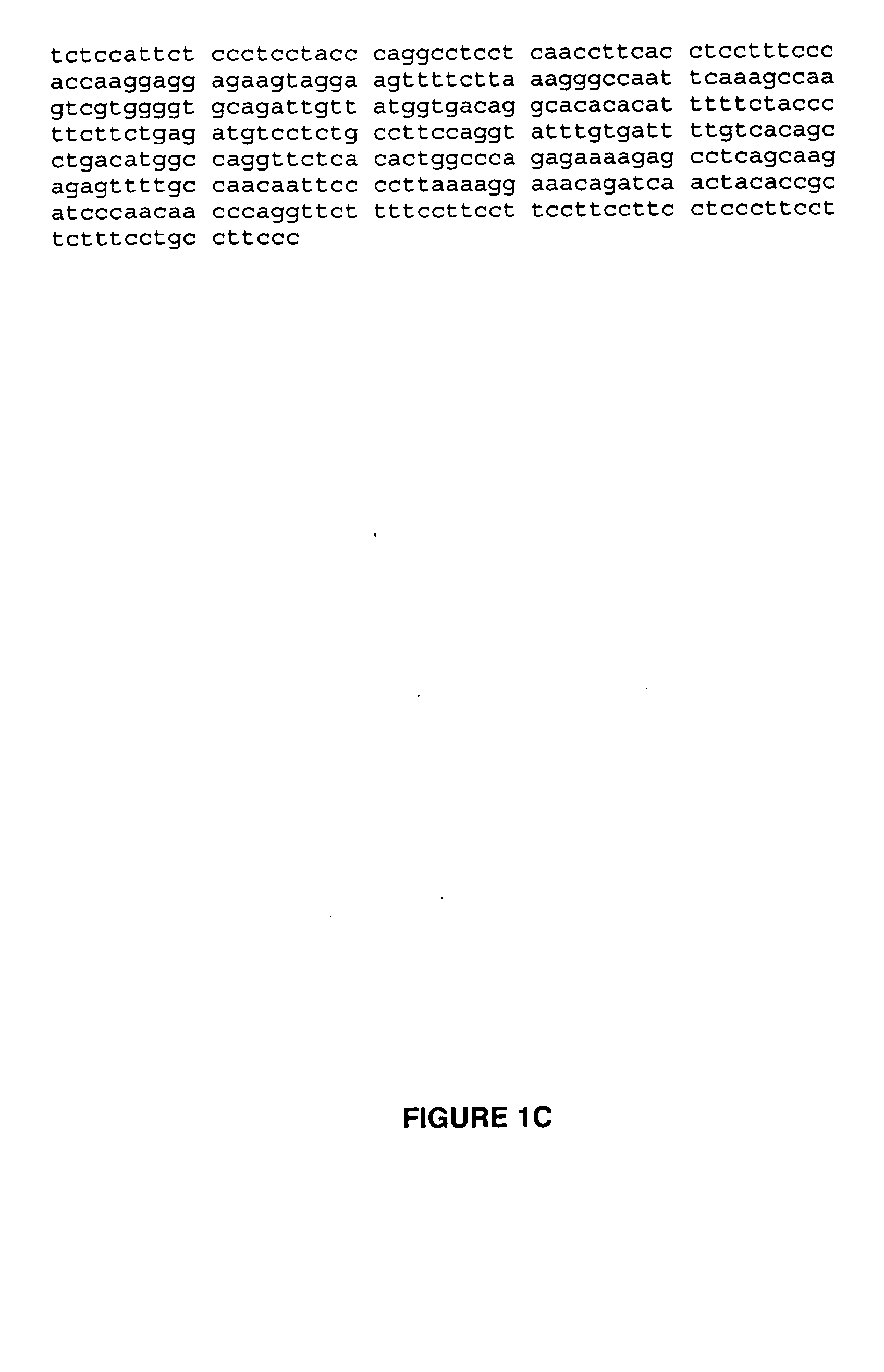Methods of treating neurological diseases by regulating migration of neuroblasts in the adult nervous system with tenascin-R
a neuroblast and adult nervous system technology, applied in the field of neuroblast migration regulation in the adult nervous system, can solve the problem of the inability of neuroblasts to functionally integrate into the bulbar circuitry, and achieve the way of radial migration to achieve functional integration into the bulbar circuitry, and achieve the effect of enhancing the permeability of the ventricle wall
- Summary
- Abstract
- Description
- Claims
- Application Information
AI Technical Summary
Benefits of technology
Problems solved by technology
Method used
Image
Examples
example 1
[0103] Animals. Two- to four-month-old TNR-deficient mice (Weber et al., 1999) and age-matched wild-type littermates were derived from heterozygous parents with a mixed C57BU6J×129Ola background. Animals were kept on a 12 hour light-dark cycle at constant temperature (22° C.) with food and water ad libitum. Unilateral olfactory deprivation was performed on three- to four-month-old C57BU6J mice by cauterizing one nostril (Meisami, 1976). All experimental procedures were in accordance with the Society for Neuroscience and European Union guidelines, and were approved by our institutional animal care and utilization committees.
[0104] BrdU injections. The DNA synthesis marker 5-bromo-2′-deoxyuridine (BrdU; Sigma) was dissolved in a sterile solution of 0.9% NaCl and 1.75% NaOH (0.4 N). This solution was injected intraperitoneally at a concentration of 50 mg / kg of body weight. BrdU containing cells were detected by immunohistochemistry after different survival times: A single dose of BrdU...
example 2
Expression of TNR in the Adult OB
[0118] To examine the expression pattern of TNR in the adult mouse SVZ-OB system, immunofluorescence labeling was combined with confocal microscopy. At various magnifications, scanning through the successive sections from the SVZ to the OB (FIG. 3a-d) revealed strong TNR-positive (TNR+) staining which was restricted to the granule cell and internal plexiform layers of the OB (FIG. 3d and e). The SVZ and RMS, identified using antibodies against the polysialylated form of the neural cell adhesion molecule (PSA-NCAM), a marker for immature neurons (FIG. 3a-c), were always devoid of TNR labeling. No staining for TNR was observed in the OB of TNR-deficient mice. The TNR immunostaining pattern is consistent with previous in situ hybridization data showing that granule cells are the major source of TNR synthesis in the adult OB (Fuss, et al., 1993). The exclusive pattern of TNR expression in the deep layers of the OB surrounding the RMS, and not within it,...
example 3
Reduced Number of Newborn Cells in the OB of TNR-Deficient Mice
[0119] To investigate the potential role of TNR in bulbar neurogenesis, TNR-deficient mice were used. Adult mutant and wild-type mice were given four pulses of BrdU, a marker for DNA synthesis, and brains were processed for BrdU immunohistochemistry 21 days later. Most of the BrdU+ nuclei were found scattered throughout the granule cell layer (FIG. 4a) and, to a lesser extent, in the glomerular layer (FIG. 4c). The mean density of BrdU+ nuclei located in the granule cell layer was significantly lower in mutants than in control mice (241±16 versus 421±42 cells / mm2 , respectively, n=4 for each genotype, Pb). A similar effect was also found in the glomerular layer (90±12 versus 148±2 cells / mm2, Pd).
[0120] To test whether the 40% reduction seen in TNR-deficient mice was accompanied with alterations in the fate of newborn cells, the proportion of cells double-labeled for BrdU and either the neuronal marker NeuN (FIG. 4e) or...
PUM
| Property | Measurement | Unit |
|---|---|---|
| Permeability | aaaaa | aaaaa |
Abstract
Description
Claims
Application Information
 Login to View More
Login to View More - R&D
- Intellectual Property
- Life Sciences
- Materials
- Tech Scout
- Unparalleled Data Quality
- Higher Quality Content
- 60% Fewer Hallucinations
Browse by: Latest US Patents, China's latest patents, Technical Efficacy Thesaurus, Application Domain, Technology Topic, Popular Technical Reports.
© 2025 PatSnap. All rights reserved.Legal|Privacy policy|Modern Slavery Act Transparency Statement|Sitemap|About US| Contact US: help@patsnap.com



